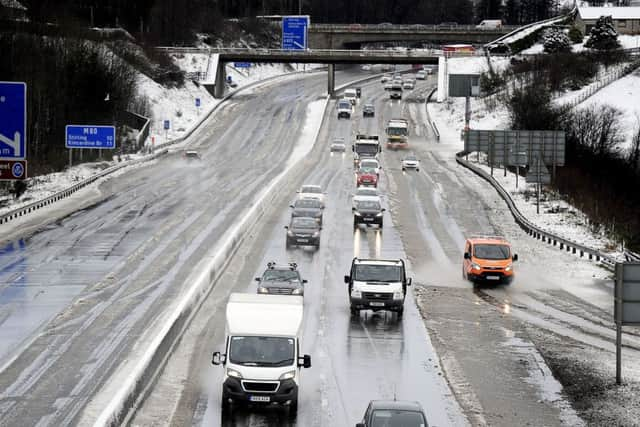UK storm names explained and what's next after Doris


The latest of the UK’s “named” storms has arrived in Scotland today with a vengeance, causing travel chaos for commuters and shutting some schools.
Doris is the fourth such storm of the current season since the Met Office followed their counterparts in the U.S and started giving storms first names.
Advertisement
Hide AdAdvertisement
Hide AdThe Irish equivalent of the Met Office is also involved in the naming scheme pilot, which started in the 2015/16 storm season and saw such storms as Gertrude and Frank cause trouble.
Storm Seasons
The windstorm seasons in the UK and Ireland occurs within our typical tropical ‘wet season’ that is the colder months of the year.
The dates of the storm season aren’t fixed, though ordinarily run from November to March, based on when the first storm formed and the last storm dissipated.
The 2015-16 season, which was the first to use the new naming system, which started in early November with Storm Abigail with Storm Katie.
The start of this current season was confirmed when Storm Angus started in mid November, causing one death and many power outages.
Criteria
Not all storms are named, otherwise we would be running out of names very quickly, especially in a country with as much wind and rain as Scotland.
The naming scheme only applies to ‘cyclonic windstorms’ on a large scale which have potential to have a significant impact on people and proerty. All severe weather wind events that trigger an Orange or Red weather warning from the Met Office qualify for one of the assigned names.
American influence
The names follow the American tradition of alternating between male and female named storms, just as our Transatlantic cousins do with hurricanes.
Advertisement
Hide AdAdvertisement
Hide AdLikewise, if Britain is due to feel the after-effects of an American superstorm, as we did with Hurricane Sandy in 2012, we simply adopt the name.
We also follow American tradition in not assigning names to the letters Q, U, X, Y and Z.
While they might be worth a few points in Scrabble, the lack of names starting with these letters mean it is considered easier to just leave them out.
The choosing
It might not have quite the showbiz appeal of the X Factor, but the names of the storms actually go to a public vote.
A ‘Name our Storms’ campaign was launched by the Met Office and their Irish counterparts, with public suggestions being taken on.
The Irish influence might explain why some names from the Emerald Isle have made the list, with Oisin and Conor among the two most prominent.
Who is next?
After Doris has finished doing as much damage as she sees fight, we move on to the letter E, which tradition dictates reverts back to a man’s name.
And there’s a distinctly Scottish flavour to the next storm, as Ewan is designated as the next name to be used.
Advertisement
Hide AdAdvertisement
Hide AdWe can only imagine the Trainspotting and Star Wars memes that will adorn the internet if Ewan turns out to be a big storm.
Ewan McGregor doesn’t need that!
After Ewan, it’s Fleur, Gabriel, Holly, Ivor, Jacqui, Jamil, Louise, Malcolm, Natalie, Oisin, Penelope, Robert, Susan, Thomas, Valerie and Wilbert.
But if that sounds like a lot of wind and rain, you needn’t worry – it isn’t expected that all of the names will be used.
In the last storm season, only 11 of the 21 designated storm names were used.